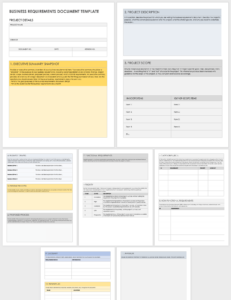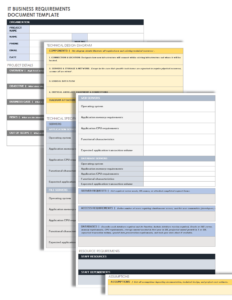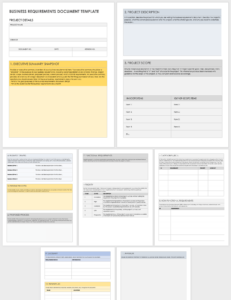Effective communication is the key to any successful project. This is especially true when it comes to developing software applications. The business requirement document (BRD) is the foundation for any software development project. A well-written BRD will help ensure that the software meets the needs of the business.
A BRD is a document that describes the business needs that the software application will address. It includes information on the scope of the project, the stakeholders involved, the business objectives, and the functional and non-functional requirements. A well-written BRD will help ensure that the software is developed in a way that meets the needs of the business.
What to Include in a Business Requirement Document
The following are some of the key elements that should be included in a business requirement document:
- Project scope: A description of the scope of the project, including the goals and objectives of the project.
- Stakeholders: A list of the stakeholders involved in the project, including their roles and responsibilities.
- Business objectives: A statement of the business objectives that the software application will support.
- Functional requirements: A description of the specific functions that the software application will perform.
- Non-functional requirements: A description of the non-functional requirements for the software application, such as performance, reliability, and security.
- Acceptance criteria: A description of the criteria that will be used to determine if the software application meets the business requirements.
How to Write a Business Requirement Document
The following are some tips for writing a business requirement document:
- Start by gathering information from stakeholders. This will help you to understand the business needs and objectives that the software application will address.
- Develop a project scope statement. This will help you to define the scope of the project and to identify the stakeholders involved.
- Identify the business objectives. This will help you to focus the development of the software application on meeting the business needs.
- Develop functional and non-functional requirements. This will help you to define the specific functions that the software application will perform and the non-functional requirements that it must meet.
- Write the business requirement document. This should be a clear, concise, and complete document that describes the business needs and objectives that the software application will address.
- Get feedback from stakeholders. This will help you to ensure that the business requirement document is accurate and complete.
Conclusion
A business requirement document is a critical part of any software development project. A well-written BRD will help ensure that the software meets the needs of the business by providing a clear and concise statement of the business needs and objectives that the software application will address.
By following the tips in this article, you can write a business requirement document that will help ensure the success of your software development project.


